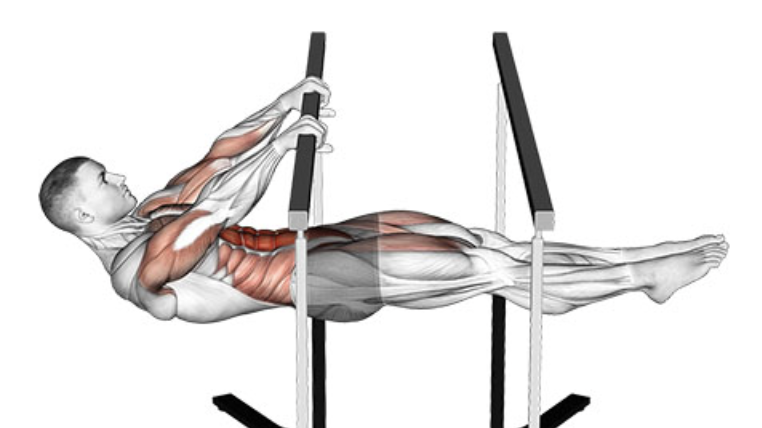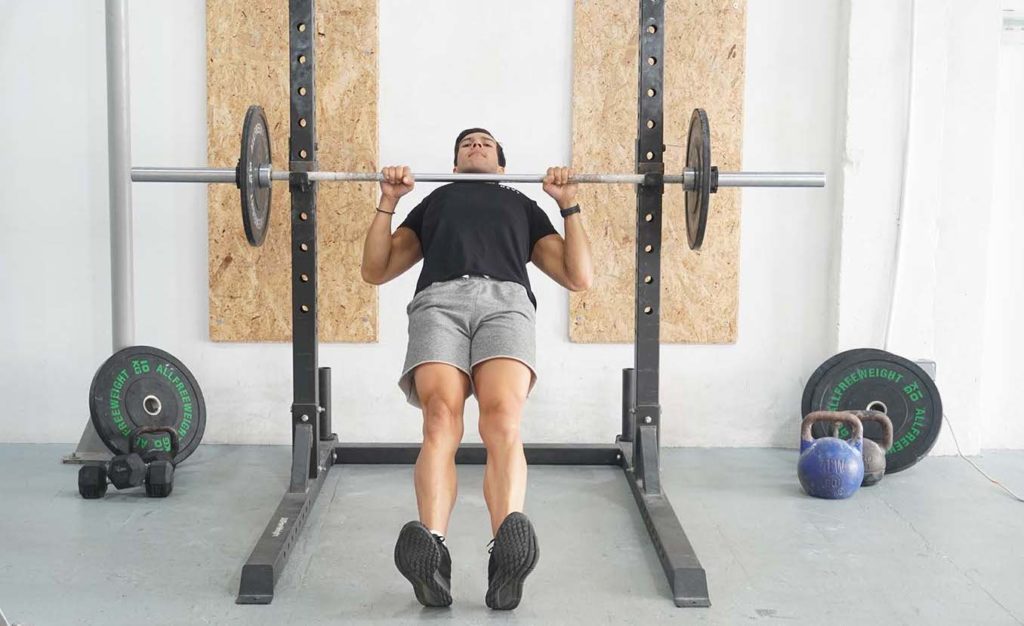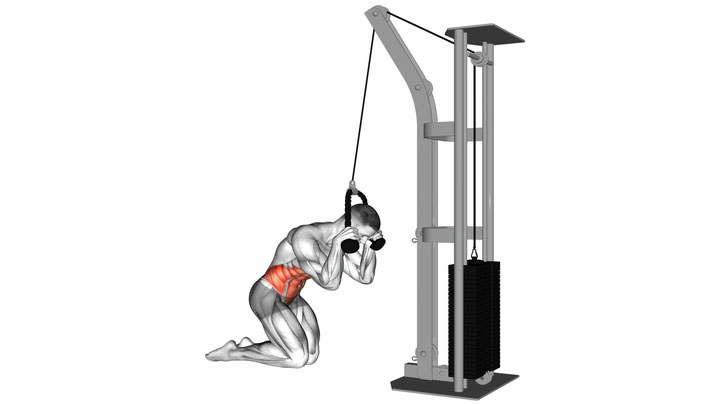What is the Front Lever Raise?
Aside from being one of the coolest exercises we could do, front lever raises are challenging and incredibly beneficial. Unlike the more popular front lever hold, raises require you to lift your body into a horizontal position several times. You need tremendous strength and whole-body stability to perform even one repetition.
The most notable benefit of the exercise is that it challenges you well and trains every major muscle group in your body. Another advantage of the activity is that you don’t need anything besides a sturdy bar to support your body.
There are several levels to progressing into the front lever raise, which we’ll review in one of the following points. We recommend practicing the exercise early in your training, regardless of your ability.
How to do a Front Lever Raise

- Reach up and grab a bar with an even, overhand grip. Your hands should be shoulder-width apart and elbows extended.
- Extend your knees by flexing your quadriceps and bring your feet together.
- Maintain a neutral spine by flexing your midsection muscles. Avoid arching your lower back during any part of the front level raise.
- Flex your entire upper body and take a breath.
- With your body rigid, initiate the front lever raise by leaning back as you engage your lats and midsection.
- Raise your entire body in a horizontal position by engaging your back, shoulders, and midsection musculature.
- Lift your body until you reach a horizontal position, hold for a moment, and descend to the starting position, exhaling near the bottom.
- Take another breath and repeat.
What muscles does the front lever raise activate?
Front lever raises are a dynamic, full-body activity that trains a range of large and small muscles in the body. One of the primary muscles that work during the movement is the latissimus dorsi, which covers a significant percentage of the upper and middle back (1). The muscle group provides torso support and creates the necessary force to extend our shoulders and elevate ourselves into a horizontal position.
The triceps muscle group works in combination with the latissimus dorsi to provide shoulder stability, keep our arms straight, and contribute to shoulder extension (2). Above the triceps lie our deltoids, providing shoulder stability and further contributing to extension.
Our core musculature (rectus and transverse abdominis, obliques, glutes, and erector spinae) is heavily involved in the front lever raise. Like the lats, these muscles offer torso support, allowing us to transfer force into the bar and perform the exercise more effectively. The five hip flexors (iliacus, iliocapsularis, sartorius, rectus femoris, and psoas) play a similar role by flexing isometrically to keep us stable and straight as an arrow.
Aside from the upper body, our quadriceps also contribute to the front lever raise. Тhe quadriceps flex isometrically to keep our knees extended and lower body stable (3).
Progression into a Front Lever Raise
Begin your progression by mastering inverted rows, pull-ups, hanging knee raises, and hollow holds. Performing these movements will help you strengthen all of the muscles involved in front lever raises, making it easier to master the main exercise later.
Once you’re relatively proficient with all of the above movements, it’s time to start practicing weighted pull-ups and front lever tucks. The former is a fantastic exercise to develop your back strength further. In contrast, the latter is a stepping stone to pull off a front lever raise. The idea with front lever tucks is to have your body horizontal but keep your knees tucked.
The next step in your progression is to extend your knees while holding the front lever tuck. Begin with your knees over your hips and gradually extend them as much as possible. You can spread your legs wide from one another initially and progressively bring them together as you straighten your knees. Doing so will familiarize you with the front lever position and further strengthen your back and midsection.
You should be able to extend your body to a full front level by this point. From there, it becomes a matter of practice to get even stronger and hone your skills.
Variations and Modifications of the Front Lever Raise
1. Front Lever Tucks
Front lever tucks are one of the first movements in your progression to the full rase. The objective is to raise your body horizontally but keep your knees bent and over your torso. Doing so makes it easier for you to maintain a position, even if you lack significant core strength.
2. Front Lever Holds
Front lever holds are an excellent isometric exercise that builds whole-body strength and stability. Performing it as part of your progression is a great way to get more comfortable with front lever raises and develop the necessary strength and balance.
3. Ring Front Lever Raise
The ring front lever raise is the same exercise as the one you would perform on a bar. The only difference is that rings create instability, making it more challenging to maintain a steady position.
Mistakes to Avoid
A common mistake with the front lever raise is treating the exercise as a hobby. Front lever raises are an incredibly challenging exercise to master, so practicing it at least three to four times per week will lead to better results. Aside from helping you build the necessary strength, frequent practice will develop the skills you need to perform the movement.
Another mistake with the front lever raise is maintaining an arch in your lower back. Doing so prevents you from engaging your abs and hip flexors effectively, making the exercise impossible to pull off. A good way to avoid the error is to learn front lever tucks. The movement forces you to maintain a natural curve in your spine and engage your abs. Once you’re comfortable with the position, begin extending your legs until you can hold a front lever.
The third mistake is learning the movement from the ground up: grabbing a bar (or rings) and attempting the front lever raise. While certainly not impossible, that way of learning is much more challenging. A better way would be to strengthen the involved muscles and master the front lever tuck and hold. By that point, you’ll have enough strength and stability to start raising yourself, even if halfway up.
Similar Exercises to the Front Lever Raise
Inverted Row

While certainly not the same as a front lever raise, the inverted row is a valuable exercise you should do as part of your progression. Inverted rows are beneficial because they strengthen your back and midsection, making learning the front lever tuck and stepping up to the front lever raise easier (4).
Cable Crunch

Cable crunches are also not the same as a front lever raise. But, similar to inverted rows, the cable crunch is a valuable movement you should do as part of your progression. You can adjust the resistance based on your strength and overload your midsection with a significant amount of weight.

